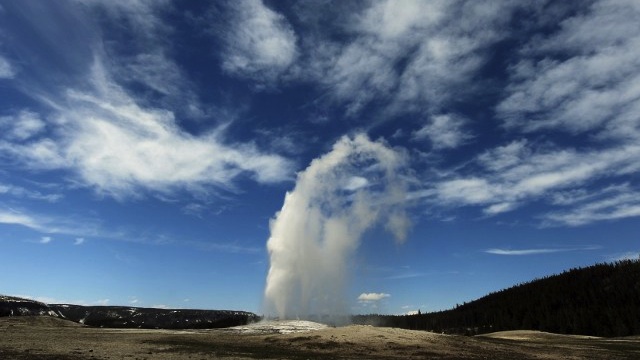SUMMARY
This is AI generated summarization, which may have errors. For context, always refer to the full article.

PARIS, France – Geologists on Sunday, January 5, reported insights into super-volcanoes, the brooding, enigmatic giants of Earth’s crust whose eruptions are as catastrophic as they are rare.
The buoyancy of molten rock, or magma, is the key explanation as to why these monsters blow their stack, according to the report in the journal Nature Geoscience.
Super-volcanoes include Yellowstone, in the US state of Wyoming, which spewed out more than 1,000 cubic kilometers (240 cubic miles) of ash and rock when it last erupted about 600,000 years ago.
Events of this kind can chill the planet’s surface by up to 10ºC (18ºF) for a decade or more because the ash, carried into the stratosphere, reflects sunlight, according to a 2005 study.
By comparison, the biggest volcanic eruption of the last quarter-century was that of the Philippine volcano Pinatubo in 1991, which discharged a relatively puny 10 cubic kilometers (2.4 cubic miles).
Seeking to understand why volcanoes can be so different, a team from Switzerland, France and Britain built a computer model of volcanic activity, basing the age of eruptions on a telltale mineral, zircon, found in volcanic rocks.
Separately, a team from the Swiss Federal Institute of Technology in Zurich (ETH) used a hi-tech X-ray facility to study the density of molten rock below super-volcanoes.
In conventional volcanoes, activity is determined by the size of the magma chamber, meaning the rocky vault below the volcano, the investigations found.
Relatively small in volume, the chamber in conventional volcanoes is replenished regularly by bursts of upwelling magma, which is expelled in moderate amounts when the pressure becomes too much.
Density of magma
But in super-volcanoes, the magma chamber is simply too big to be pressurized by magma injections alone. In these leviathans, what happens is that a buoyant kind of magma steadily accumulates in the chamber.
Like a kettle, the chamber is initially strong enough to resist the pressure but eventually breaks apart in a cataclysmic discharge.
“Until now, nobody had measured the density of the magma that is present in the magma chambers of super-volcanoes,” EZH’s Wim Malfait said in an email exchange with Agence France-Presse.
The density is important, he explained, “because magma is less dense than solid rock, the magma in a magma chamber pushes on the roof of the chamber.”
“This is similar to holding a football under water – the air in the football is lighter than the surrounding water, so the water pushes it against your hand. Overpressure is enough to start a super-eruption if the magma chamber is thick enough,” Malfait said.
The Swiss-French-British team calculated that the maximum volcanic eruption would entail a release of between 3,500 and 7,000 cubic kilometers (840 and 1,680 cubic miles) of magma – the first time an upper limit has ever been established for a volcano.
The two studies should provide useful pointers as to the frequency of super-volcano events, the authors hope. Almost nothing is known about how swiftly these beasts recharge with magma and blow up, for only 23 such eruptions have occurred in the last 32 million years.
The work is useful for understanding the risks of Yellowstone, but far more work is needed, said the authors.
“We could potentially use estimates of the vertical extension of the magma chamber to infer if a volcanic system such as Yellowstone is in critical condition or not,” said Luca Caricchi, an assistant professor of volcanology at the University of Geneva.
“However, the pressure for a volcanic eruption to occur is a function of many factors,” he said. “It would be premature to make any forecasting using our model.”
A study from 2012 indicates that before Yellowstone erupts, the ground would lift by possibly hundreds of meters (yards), said Malfait.
“But this would not help to distinguish directly if an eruption is going to happen next week, next year or next century,” he said. – Rappler.com
Add a comment
How does this make you feel?





There are no comments yet. Add your comment to start the conversation.